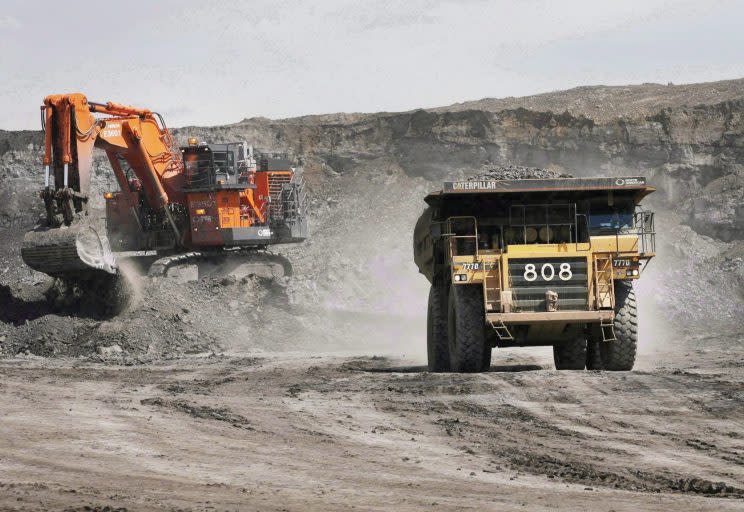Oilsands firms struggling to find new employees

(THE CANADIAN PRESS/Jeff McIntosh)
Companies in Alberta’s oilsands are hoping that workers will head west, as they say a labour shortage could throttle the region’s recovering economy.
According to Bloomberg, drilling and equipment firms are struggling to find new recruits. Thousands of jobs were lost in the oilpatch since prices took a turn for the worse nearly three years ago, with some estimates pegging the number as high as 44,000, many of whom returned home to their native provinces.
With a potential recovery on the horizon, thanks to stabilizing prices, producers are hoping to get more hands on deck. But, so far, they’ve struggled to bring workers back.
“We’re firing up more rigs, we’re firing up more frack spreads and we need more crews and more equipment, but those extra people aren’t coming back,” Mark Salkeld, president of the Petroleum Services Association of Canada, told Bloomberg.
Dale Dusterhoft, CEO of Calgary-based Trican Well Service Ltd., told Bloomberg that the oilfield services company lost out on as much as $15 million in revenue in the first quarter because it couldn’t get enough workers.
He said the firm will likely fall short of its goal to bring on an additional 200 people before the end of the summer.
“We can’t really get them all as quick as we want,” Dusterhoft said.
“So it probably delays our growth a little.”
With the price of oil hovering steadily around the US$50-dollar mark, oilsands companies can likely no longer offer the high-end wages that were commonplace when the value of a barrel cracked the century mark.
Many workers who lost their jobs also sought employment in sectors they perceived as having more stability.
“When we went to try and bring some of those folks back, the most common question we got was, ‘Do you have steady work? If I come back, how do I know I’m not going to be laid off in three or six months again?’” Garnet Amundson, CEO of Essential Energy Services Ltd., told Bloomberg.
Many of the jobs they previously held may have also disappeared, as companies have moved to streamline operations and automation has ramped up.
Essential, which rents tools and offers coil tubing services, is aiming to increase its ranks to 500 by the end of the year, up from about 340, as many of their pumps and rigs sat idle during the first quarter.
Without high wages, attracting workers to remote locations, with frigid winter temperatures, for grueling work with long hours, can be a tough sell.
Janet Lane, director of the Human Capital Centre at the Canada West Foundation, a non-partisan think tank, told Bloomberg that while this type of work is appealing to some it deters people with families.
“It’s very well-paying, but it’s very hard work,” Lane said. “The isolation, the lack of connection can be very hard on people.”



